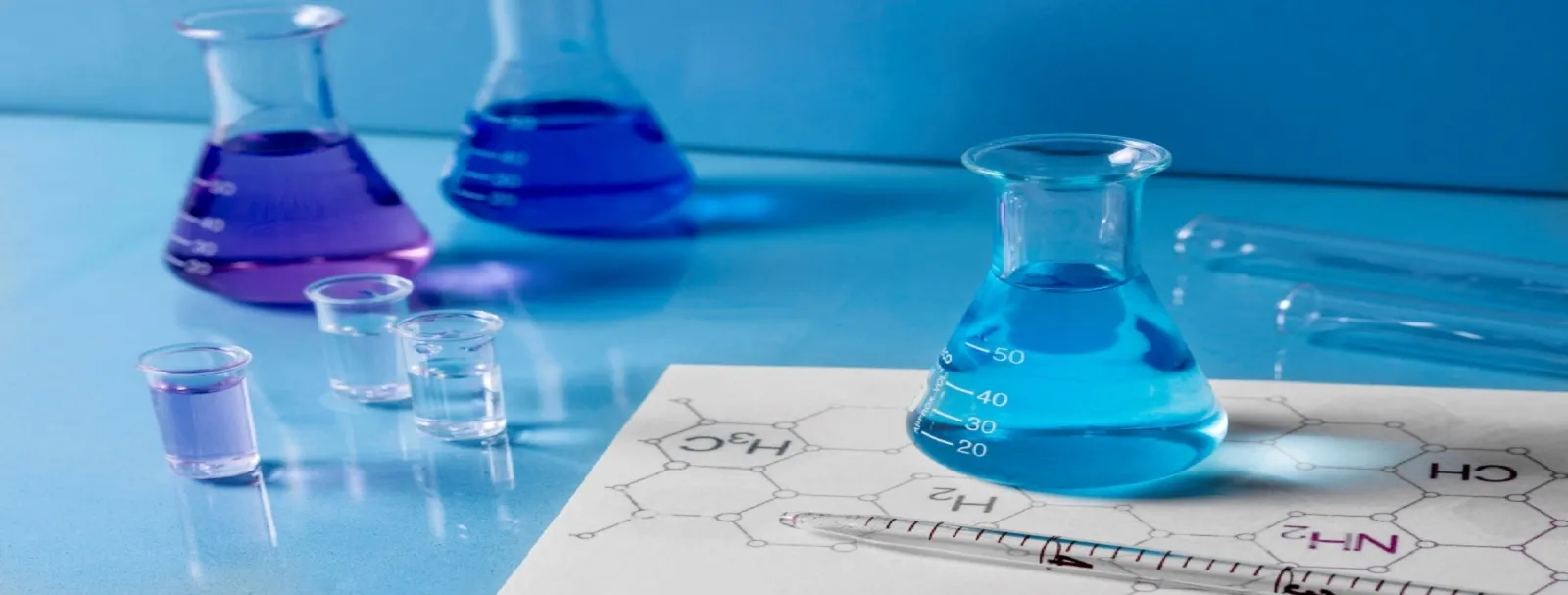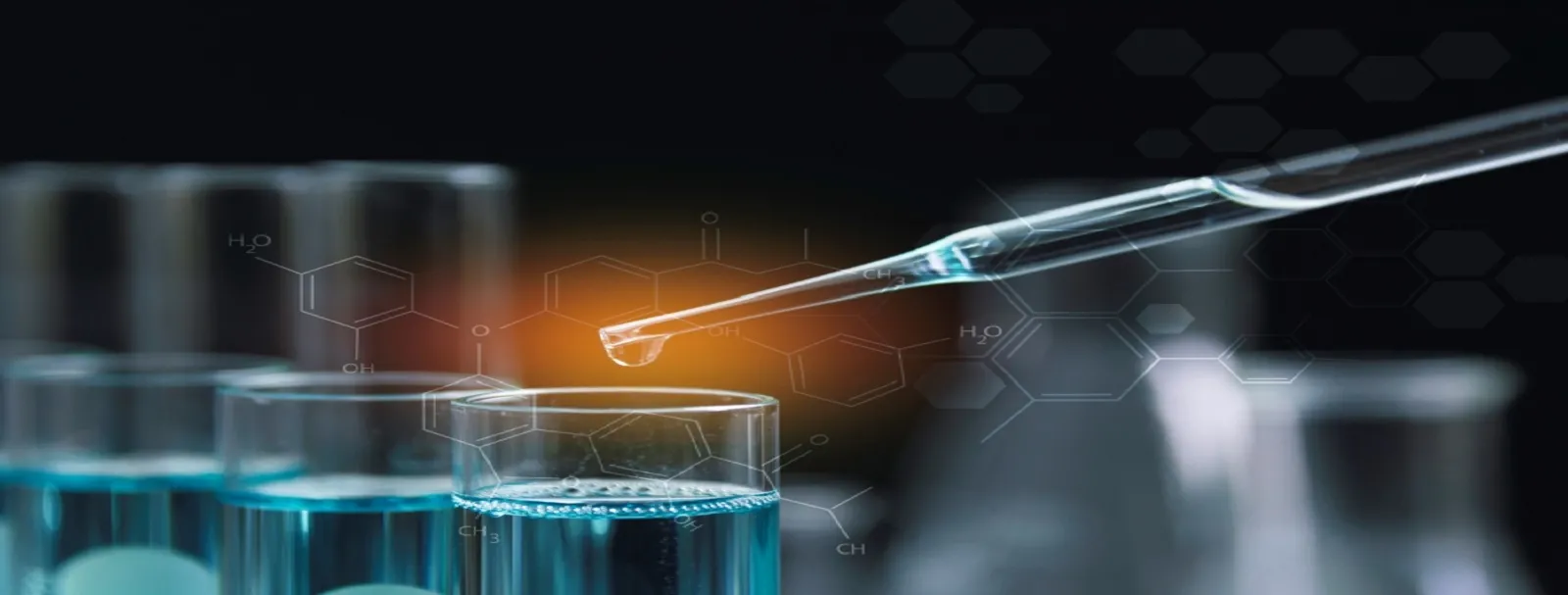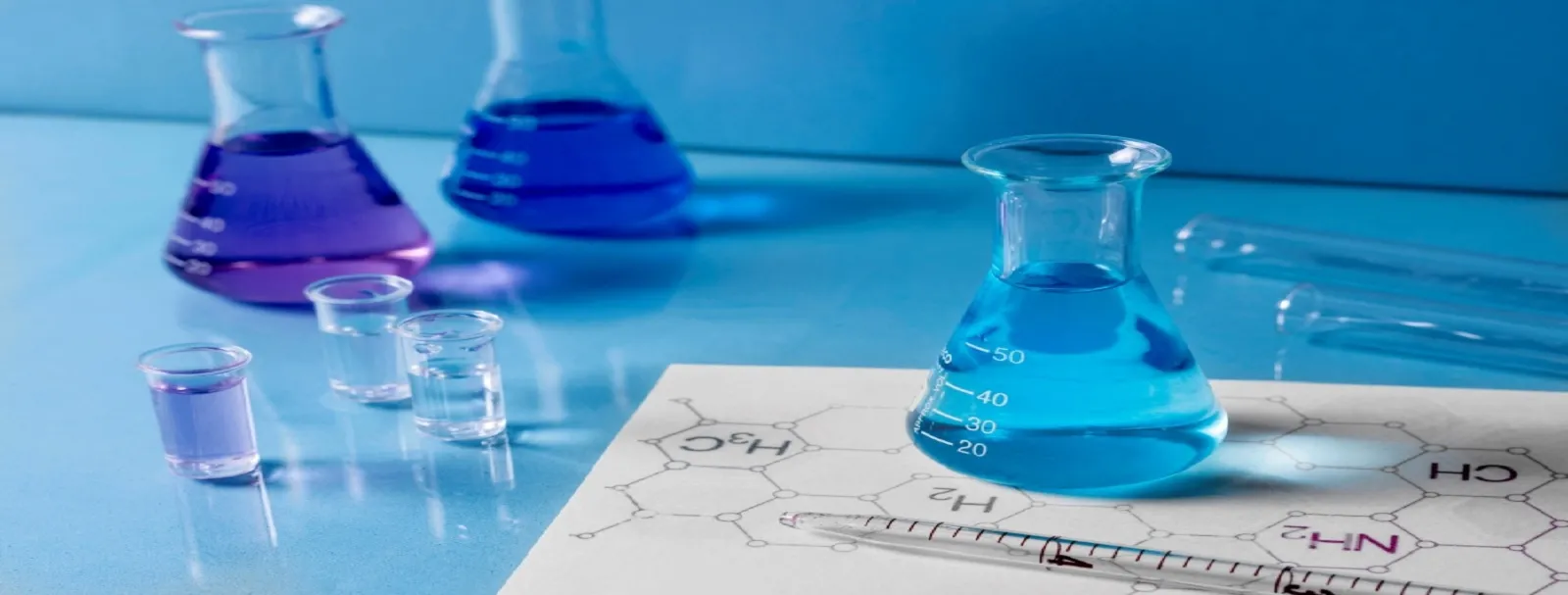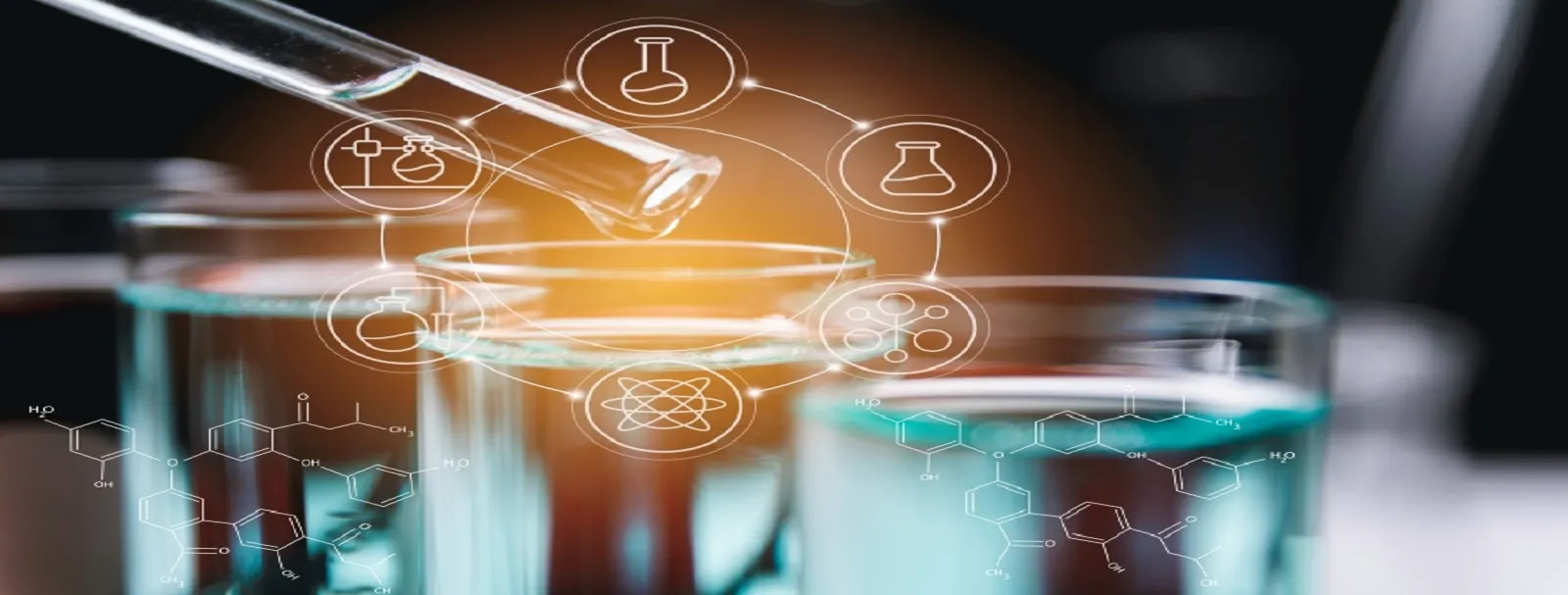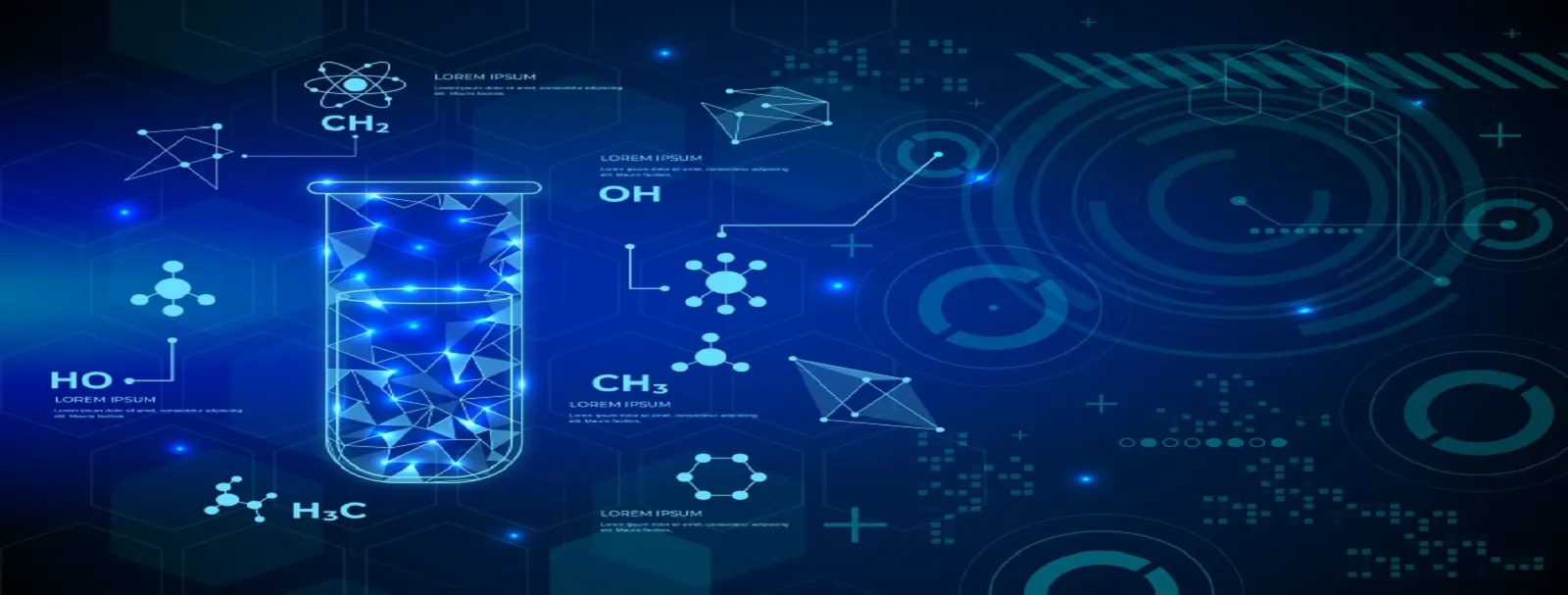Market Outlook
The global Boron Market size was valued at USD 2543.8 million in 2022 and is forecast to a readjusted size of USD 3308.9 million by 2029 with a CAGR of 3.8% during review period.
Introduction: Why the Boron Market Matters in 2025
The Boron Market in 2025 is expanding as this versatile element supports applications in glass manufacturing, agriculture, detergents, and energy storage. Boron compounds improve glass strength and heat resistance, enhance crop yields, act as cleaning agents, and serve as critical components in battery technologies. Its multifaceted utility underpins growth across multiple industrial sectors.
This market is essential for chemical manufacturers, agriculture suppliers, and advanced material producers aiming to enhance product performance and sustainability.
Market Drivers: What’s Fueling the Boron Boom?
Glass Industry Demand: Boron strengthens fiberglass, borosilicate glass, and specialty glass for electronics and construction.
Agricultural Use: Boron micronutrients improve crop quality and yield, addressing global food security challenges.
Detergent and Cleaning Products: Borates provide alkalinity and buffering, enhancing cleaning efficiency.
Energy Storage Innovations: Boron-based materials are being explored for next-gen batteries and fuel cells.
Innovation in Focus: How Boron Producers Are Leading
Advanced Extraction Techniques: Improving boron recovery from minerals and brines with reduced environmental impact.
New Boron Compounds: Developing specialty borates and boron nitride for high-tech applications.
Sustainable Agriculture Products: Creating slow-release boron fertilizers and eco-friendly crop supplements.
Battery Research: Collaborating with energy companies to integrate boron materials in advanced batteries.
Regional Breakdown: Where Demand Is Shifting
Asia-Pacific: Largest consumer due to glass manufacturing and agriculture sectors in China and India.
North America and Europe: Growing demand from detergents, electronics, and energy storage industries.
Latin America: Emerging use in agriculture and industrial applications.
Strategic Considerations: How to Compete in 2025
Enhance Resource Efficiency: Adopt sustainable mining and processing practices to reduce costs and emissions.
Develop Tailored Products: Work with customers to create boron compounds optimized for specific applications.
Expand R&D in Energy Storage: Invest in boron-based battery material development.
Strengthen Global Supply Chains: Secure raw materials and ensure consistent quality.
Conclusion: The Boron Market - A Critical Element for Industrial and Technological Growth
In 2025, boron’s diverse applications position it as a strategic material. Market leaders focused on innovation, sustainability, and customer-centric solutions will thrive.
Key Market Players
Eti Maden
Rio Tinto
Searles Valley Minerals
Minera Santa Rita
Borax Argentina
Quiborax
Segmentation By Type
Salt Lake Source
Mine Source
Segmentation By Application
Glass
Ceramics
Agriculture
Detergents
Others
Segmentation By Region
North America (United States, Canada and Mexico)
Europe (Germany, France, United Kingdom, Russia, Italy, and Rest of Europe)
Asia-Pacific (China, Japan, Korea, India, Southeast Asia, and Australia)
South America (Brazil, Argentina, Colombia, and Rest of South America)
Middle East & Africa (Saudi Arabia, UAE, Egypt, South Africa, and Rest of Middle East & Africa)
Market SWOT Analysis
What are the strengths of the Boron Market in 2025?
Boron plays a crucial role in various sectors like agriculture, glass production, and advanced materials, ensuring consistent demand across industries.
What are the weaknesses of the Boron Market in 2025?
The market is affected by limited sources and the high cost of production, as well as competition from alternative materials in some applications.
What are the opportunities for the Boron Market in 2025?
Growing applications in renewable energy technologies, particularly in solar panels and batteries, offer strong market growth potential.
What are the threats to the Boron Market in 2025?
Environmental concerns related to mining and alternative materials could reduce demand for boron in certain industries.
Market PESTEL Analysis
How do political factors impact the Boron Market in 2025?
Government policies regarding mining, trade tariffs, and environmental regulations on boron extraction influence the global supply and demand of boron. National interests in boron for strategic uses like aerospace and defense can also drive market trends.
What economic factors affect the Boron Market in 2025?
Economic conditions in the construction, agriculture, and energy sectors drive demand for boron in applications such as glass production, fertilizers, and batteries. Fluctuations in energy prices and raw material costs also affect the market.
How do social factors shape the Boron Market in 2025?
Growing awareness of the benefits of boron in agricultural fertilizers and its role in improving crop yields is pushing demand in the agricultural sector. Similarly, increasing use of boron-based products in renewable energy technologies boosts its market presence.
What technological factors are relevant to the Boron Market in 2025?
Advancements in boron-based materials for high-performance batteries, energy-efficient glass, and lightweight composites contribute to the market's growth. Innovations in boron extraction and refining technologies also enhance production efficiency.
What environmental factors influence the Boron Market in 2025?
Environmental concerns about mining practices and the sustainability of boron extraction drive the development of eco-friendly mining methods and alternative sources. Increasing focus on the use of boron in sustainable technologies, like solar panels, also boosts market demand.
How do legal factors impact the Boron Market in 2025?
Regulations surrounding the environmental impact of boron extraction, use in agriculture, and safety standards in various industries affect the market. Legal policies related to trade restrictions and mineral rights in key boron-producing regions also influence the market.
Market SIPOC Analysis
Who are the suppliers in the Boron Market 2025?
Suppliers include mining companies, chemical manufacturers, and agricultural product suppliers who specialize in the extraction of borates and the production of boron-based compounds for industrial and agricultural uses.
What are the inputs in the Boron Market 2025?
Inputs include borate ores (like kernite and borax), refining chemicals, and specialized extraction and processing technologies to produce high-purity boron compounds used in various applications.
What processes are involved in the Boron Market 2025?
Processes include the mining of borate minerals, refining, chemical synthesis, and formulation to produce boron products such as borax, boric acid, and boron compounds for industrial and agricultural uses.
Who are the customers in the Boron Market 2025?
Customers include glass manufacturers, agriculture companies (for fertilizers), electronics firms, and energy sectors requiring boron compounds for semiconductor and energy storage applications.
What are the outcomes in the Boron Market 2025?
Outcomes include growing demand for boron in high-tech industries like electronics, increased use in agriculture for crop growth, and expanding applications in renewable energy systems and glass production.
Market Porter's Five Forces
What is the threat of new entrants in the Boron Market in 2025?
The threat of new entrants is moderate. Although the boron market is growing, entering this market requires access to mining resources, specialized production processes, and dealing with regulatory compliance, which can deter new players.
What is the bargaining power of suppliers in the Boron Market in 2025?
The bargaining power of suppliers is moderate. Boron suppliers control pricing to some extent, especially those with exclusive access to major deposits, but competition from alternative suppliers helps reduce their overall power.
What is the bargaining power of buyers in the Boron Market in 2025?
The bargaining power of buyers is moderate. There are a variety of applications for boron in industries such as agriculture, glass production, and chemicals, giving buyers some choice, but the essential nature of boron in many processes limits buyer power.
What is the threat of substitute products in the Boron Market in 2025?
The threat of substitutes is low. While there are some alternatives in specific applications, boron has unique properties that make it irreplaceable in areas such as glassmaking, fertilizers, and high-performance materials.
What is the intensity of competitive rivalry in the Boron Market in 2025?
The intensity of competitive rivalry is moderate. The market has a few key players who dominate, but increasing global demand for boron in energy-efficient technologies and agriculture is driving some competition.
Market Upstream Analysis
What are the key raw materials in the Boron Market in 2025?
Key raw materials for boron production include borate minerals such as borax and kernite, which are processed to produce boron compounds used in a wide range of industries, including glass manufacturing, agriculture, and electronics.
What role do suppliers play in the Boron Market in 2025?
Suppliers provide borate minerals and specialized chemicals required for boron production. They ensure the supply of high-quality boron compounds for industries like glassmaking, agriculture, and electronics, where boron is essential for strengthening materials, improving crop yield, and enhancing electronic components.
How does the regulatory environment affect upstream factors in this market?
Regulations on mining and environmental impact influence the extraction and processing of borate minerals. Suppliers must adhere to strict environmental standards and safety regulations to minimize ecological damage and ensure sustainable boron production.
What technological advancements influence upstream production in the Boron Market in 2025?
Advancements in mining and extraction technologies, such as more efficient separation processes and waste reduction techniques, are improving the sustainability of boron production. Innovations in boron-based materials are also enhancing the performance of boron in various applications, such as high-performance glass and fertilizers.
What challenges do upstream suppliers face in this market?
Suppliers face challenges related to the limited geographical distribution of borate deposits, rising mining costs, and the need to comply with increasingly stringent environmental and safety regulations in the production of boron compounds.
Market Midstream Analysis
What are the key processes involved in the midstream of the Boron Market in 2025?
The key processes involve the extraction of boron from boron-rich minerals, followed by refining, processing into various compounds like boric acid and borates, and packaging for distribution to industries such as agriculture, glass manufacturing, and electronics.
How do manufacturers contribute to the Boron Market in 2025?
Manufacturers focus on producing high-quality boron compounds, such as boric acid and borates, which are used in a wide range of applications from agricultural fertilizers to glass production and electronics, ensuring that boron supplies meet industrial demand.
What is the role of packaging in the midstream of this market?
Packaging ensures that boron compounds are transported safely, preserving their purity and preventing contamination or degradation during transit, especially as they are used in highly sensitive industrial applications like electronics and glass.
What challenges do companies face in the midstream of this market?
Challenges include maintaining a consistent supply of high-quality boron sources, managing the costs of extraction and processing, and addressing environmental and safety concerns related to the use of boron in various industrial applications.
How do distribution channels affect the Boron Market in 2025?
Distribution channels are essential in ensuring that boron compounds reach industries like agriculture, glass manufacturing, and electronics, where boron is used for key functions such as improving material strength and enhancing the properties of fertilizers and glass products.
Market Downstream Analysis
What are the key consumer segments in the Boron Market in 2025?
Key consumers include the agriculture industry for fertilizers, the automotive sector for glass and ceramics, and the energy sector for boron compounds used in nuclear reactors and energy storage.
What role do distributors and suppliers play in the Boron Market in 2025?
Distributors and suppliers provide boron-based products to industries, ensuring consistent supply of essential materials for agricultural, industrial, and energy-related applications while adhering to regulatory requirements.
What challenges do companies face in the downstream market of this industry?
Challenges include managing fluctuations in boron prices, addressing supply chain disruptions, and meeting demand for sustainable and eco-friendly boron products in energy and agricultural applications.
How does consumer feedback influence the Boron Market in 2025?
Consumer feedback leads to the development of more efficient and environmentally sustainable boron-based products, encouraging innovations in its application for energy storage, fertilizers, and specialized glass formulations.
Chapter 1, to describe Boron product scope, market overview, market estimation caveats and base year.
Chapter 2, to profile the top manufacturers of Boron, with price, sales, revenue and global market share of Boron from 2018 to 2023.
Chapter 3, the Boron competitive situation, sales quantity, revenue and global market share of top manufacturers are analyzed emphatically by landscape contrast.
Chapter 4, the Boron breakdown data are shown at the regional level, to show the sales quantity, consumption value and growth by regions, from 2018 to 2029.
Chapter 5 and 6, to segment the sales by Type and application, with sales market share and growth rate by type, application, from 2018 to 2029.
Chapter 7, 8, 9, 10 and 11, to break the sales data at the country level, with sales quantity, consumption value and market share for key countries in the world, from 2017 to 2022.and Boron market forecast, by regions, type and application, with sales and revenue, from 2024 to 2029.
Chapter 12, market dynamics, drivers, restraints, trends, Porters Five Forces analysis, and Influence of COVID-19 and Russia-Ukraine War.
Chapter 13, the key raw materials and key suppliers, and industry chain of Boron.
Chapter 14 and 15, to describe Boron sales channel, distributors, customers, research findings and conclusion.
1 Market Overview
1.1 Product Overview and Scope of Boron
1.2 Market Estimation Caveats and Base Year
1.3 Market Analysis by Type
1.3.1 Overview: Global Boron Consumption Value by Type: 2018 Versus 2022 Versus 2029
1.3.2 Salt Lake Source
1.3.3 Mine Source
1.4 Market Analysis by Application
1.4.1 Overview: Global Boron Consumption Value by Application: 2018 Versus 2022 Versus 2029
1.4.2 Glass
1.4.3 Ceramics
1.4.4 Agriculture
1.4.5 Detergents
1.4.6 Others
1.5 Global Boron Market Size & Forecast
1.5.1 Global Boron Consumption Value (2018 & 2022 & 2029)
1.5.2 Global Boron Sales Quantity (2018-2029)
1.5.3 Global Boron Average Price (2018-2029)
2 Manufacturers Profiles
2.1 Eti Maden
2.1.1 Eti Maden Details
2.1.2 Eti Maden Major Business
2.1.3 Eti Maden Boron Product and Services
2.1.4 Eti Maden Boron Sales Quantity, Average Price, Revenue, Gross Margin and Market Share (2018-2023)
2.1.5 Eti Maden Recent Developments/Updates
2.2 Rio Tinto
2.2.1 Rio Tinto Details
2.2.2 Rio Tinto Major Business
2.2.3 Rio Tinto Boron Product and Services
2.2.4 Rio Tinto Boron Sales Quantity, Average Price, Revenue, Gross Margin and Market Share (2018-2023)
2.2.5 Rio Tinto Recent Developments/Updates
2.3 Searles Valley Minerals
2.3.1 Searles Valley Minerals Details
2.3.2 Searles Valley Minerals Major Business
2.3.3 Searles Valley Minerals Boron Product and Services
2.3.4 Searles Valley Minerals Boron Sales Quantity, Average Price, Revenue, Gross Margin and Market Share (2018-2023)
2.3.5 Searles Valley Minerals Recent Developments/Updates
2.4 Minera Santa Rita
2.4.1 Minera Santa Rita Details
2.4.2 Minera Santa Rita Major Business
2.4.3 Minera Santa Rita Boron Product and Services
2.4.4 Minera Santa Rita Boron Sales Quantity, Average Price, Revenue, Gross Margin and Market Share (2018-2023)
2.4.5 Minera Santa Rita Recent Developments/Updates
2.5 Borax Argentina
2.5.1 Borax Argentina Details
2.5.2 Borax Argentina Major Business
2.5.3 Borax Argentina Boron Product and Services
2.5.4 Borax Argentina Boron Sales Quantity, Average Price, Revenue, Gross Margin and Market Share (2018-2023)
2.5.5 Borax Argentina Recent Developments/Updates
2.6 Quiborax
2.6.1 Quiborax Details
2.6.2 Quiborax Major Business
2.6.3 Quiborax Boron Product and Services
2.6.4 Quiborax Boron Sales Quantity, Average Price, Revenue, Gross Margin and Market Share (2018-2023)
2.6.5 Quiborax Recent Developments/Updates
3 Competitive Environment: Boron by Manufacturer
3.1 Global Boron Sales Quantity by Manufacturer (2018-2023)
3.2 Global Boron Revenue by Manufacturer (2018-2023)
3.3 Global Boron Average Price by Manufacturer (2018-2023)
3.4 Market Share Analysis (2022)
3.4.1 Producer Shipments of Boron by Manufacturer Revenue ($MM) and Market Share (%): 2022
3.4.2 Top 3 Boron Manufacturer Market Share in 2022
3.4.2 Top 6 Boron Manufacturer Market Share in 2022
3.5 Boron Market: Overall Company Footprint Analysis
3.5.1 Boron Market: Region Footprint
3.5.2 Boron Market: Company Product Type Footprint
3.5.3 Boron Market: Company Product Application Footprint
3.6 New Market Entrants and Barriers to Market Entry
3.7 Mergers, Acquisition, Agreements, and Collaborations
4 Consumption Analysis by Region
4.1 Global Boron Market Size by Region
4.1.1 Global Boron Sales Quantity by Region (2018-2029)
4.1.2 Global Boron Consumption Value by Region (2018-2029)
4.1.3 Global Boron Average Price by Region (2018-2029)
4.2 North America Boron Consumption Value (2018-2029)
4.3 Europe Boron Consumption Value (2018-2029)
4.4 Asia-Pacific Boron Consumption Value (2018-2029)
4.5 South America Boron Consumption Value (2018-2029)
4.6 Middle East and Africa Boron Consumption Value (2018-2029)
5 Market Segment by Type
5.1 Global Boron Sales Quantity by Type (2018-2029)
5.2 Global Boron Consumption Value by Type (2018-2029)
5.3 Global Boron Average Price by Type (2018-2029)
6 Market Segment by Application
6.1 Global Boron Sales Quantity by Application (2018-2029)
6.2 Global Boron Consumption Value by Application (2018-2029)
6.3 Global Boron Average Price by Application (2018-2029)
7 North America
7.1 North America Boron Sales Quantity by Type (2018-2029)
7.2 North America Boron Sales Quantity by Application (2018-2029)
7.3 North America Boron Market Size by Country
7.3.1 North America Boron Sales Quantity by Country (2018-2029)
7.3.2 North America Boron Consumption Value by Country (2018-2029)
7.3.3 United States Market Size and Forecast (2018-2029)
7.3.4 Canada Market Size and Forecast (2018-2029)
7.3.5 Mexico Market Size and Forecast (2018-2029)
8 Europe
8.1 Europe Boron Sales Quantity by Type (2018-2029)
8.2 Europe Boron Sales Quantity by Application (2018-2029)
8.3 Europe Boron Market Size by Country
8.3.1 Europe Boron Sales Quantity by Country (2018-2029)
8.3.2 Europe Boron Consumption Value by Country (2018-2029)
8.3.3 Germany Market Size and Forecast (2018-2029)
8.3.4 France Market Size and Forecast (2018-2029)
8.3.5 United Kingdom Market Size and Forecast (2018-2029)
8.3.6 Russia Market Size and Forecast (2018-2029)
8.3.7 Italy Market Size and Forecast (2018-2029)
9 Asia-Pacific
9.1 Asia-Pacific Boron Sales Quantity by Type (2018-2029)
9.2 Asia-Pacific Boron Sales Quantity by Application (2018-2029)
9.3 Asia-Pacific Boron Market Size by Region
9.3.1 Asia-Pacific Boron Sales Quantity by Region (2018-2029)
9.3.2 Asia-Pacific Boron Consumption Value by Region (2018-2029)
9.3.3 China Market Size and Forecast (2018-2029)
9.3.4 Japan Market Size and Forecast (2018-2029)
9.3.5 Korea Market Size and Forecast (2018-2029)
9.3.6 India Market Size and Forecast (2018-2029)
9.3.7 Southeast Asia Market Size and Forecast (2018-2029)
9.3.8 Australia Market Size and Forecast (2018-2029)
10 South America
10.1 South America Boron Sales Quantity by Type (2018-2029)
10.2 South America Boron Sales Quantity by Application (2018-2029)
10.3 South America Boron Market Size by Country
10.3.1 South America Boron Sales Quantity by Country (2018-2029)
10.3.2 South America Boron Consumption Value by Country (2018-2029)
10.3.3 Brazil Market Size and Forecast (2018-2029)
10.3.4 Argentina Market Size and Forecast (2018-2029)
11 Middle East & Africa
11.1 Middle East & Africa Boron Sales Quantity by Type (2018-2029)
11.2 Middle East & Africa Boron Sales Quantity by Application (2018-2029)
11.3 Middle East & Africa Boron Market Size by Country
11.3.1 Middle East & Africa Boron Sales Quantity by Country (2018-2029)
11.3.2 Middle East & Africa Boron Consumption Value by Country (2018-2029)
11.3.3 Turkey Market Size and Forecast (2018-2029)
11.3.4 Egypt Market Size and Forecast (2018-2029)
11.3.5 Saudi Arabia Market Size and Forecast (2018-2029)
11.3.6 South Africa Market Size and Forecast (2018-2029)
12 Market Dynamics
12.1 Boron Market Drivers
12.2 Boron Market Restraints
12.3 Boron Trends Analysis
12.4 Porters Five Forces Analysis
12.4.1 Threat of New Entrants
12.4.2 Bargaining Power of Suppliers
12.4.3 Bargaining Power of Buyers
12.4.4 Threat of Substitutes
12.4.5 Competitive Rivalry
12.5 Influence of COVID-19 and Russia-Ukraine War
12.5.1 Influence of COVID-19
12.5.2 Influence of Russia-Ukraine War
13 Raw Material and Industry Chain
13.1 Raw Material of Boron and Key Manufacturers
13.2 Manufacturing Costs Percentage of Boron
13.3 Boron Production Process
13.4 Boron Industrial Chain
14 Shipments by Distribution Channel
14.1 Sales Channel
14.1.1 Direct to End-User
14.1.2 Distributors
14.2 Boron Typical Distributors
14.3 Boron Typical Customers
15 Research Findings and Conclusion
16 Appendix
16.1 Methodology
16.2 Research Process and Data Source
16.3 Disclaimer
List of Tables
Table 1. Global Boron Consumption Value by Type, (USD Million), 2018 & 2022 & 2029
Table 2. Global Boron Consumption Value by Application, (USD Million), 2018 & 2022 & 2029
Table 3. Eti Maden Basic Information, Manufacturing Base and Competitors
Table 4. Eti Maden Major Business
Table 5. Eti Maden Boron Product and Services
Table 6. Eti Maden Boron Sales Quantity (K MT), Average Price (USD/MT), Revenue (USD Million), Gross Margin and Market Share (2018-2023)
Table 7. Eti Maden Recent Developments/Updates
Table 8. Rio Tinto Basic Information, Manufacturing Base and Competitors
Table 9. Rio Tinto Major Business
Table 10. Rio Tinto Boron Product and Services
Table 11. Rio Tinto Boron Sales Quantity (K MT), Average Price (USD/MT), Revenue (USD Million), Gross Margin and Market Share (2018-2023)
Table 12. Rio Tinto Recent Developments/Updates
Table 13. Searles Valley Minerals Basic Information, Manufacturing Base and Competitors
Table 14. Searles Valley Minerals Major Business
Table 15. Searles Valley Minerals Boron Product and Services
Table 16. Searles Valley Minerals Boron Sales Quantity (K MT), Average Price (USD/MT), Revenue (USD Million), Gross Margin and Market Share (2018-2023)
Table 17. Searles Valley Minerals Recent Developments/Updates
Table 18. Minera Santa Rita Basic Information, Manufacturing Base and Competitors
Table 19. Minera Santa Rita Major Business
Table 20. Minera Santa Rita Boron Product and Services
Table 21. Minera Santa Rita Boron Sales Quantity (K MT), Average Price (USD/MT), Revenue (USD Million), Gross Margin and Market Share (2018-2023)
Table 22. Minera Santa Rita Recent Developments/Updates
Table 23. Borax Argentina Basic Information, Manufacturing Base and Competitors
Table 24. Borax Argentina Major Business
Table 25. Borax Argentina Boron Product and Services
Table 26. Borax Argentina Boron Sales Quantity (K MT), Average Price (USD/MT), Revenue (USD Million), Gross Margin and Market Share (2018-2023)
Table 27. Borax Argentina Recent Developments/Updates
Table 28. Quiborax Basic Information, Manufacturing Base and Competitors
Table 29. Quiborax Major Business
Table 30. Quiborax Boron Product and Services
Table 31. Quiborax Boron Sales Quantity (K MT), Average Price (USD/MT), Revenue (USD Million), Gross Margin and Market Share (2018-2023)
Table 32. Quiborax Recent Developments/Updates
Table 33. Global Boron Sales Quantity by Manufacturer (2018-2023) & (K MT)
Table 34. Global Boron Revenue by Manufacturer (2018-2023) & (USD Million)
Table 35. Global Boron Average Price by Manufacturer (2018-2023) & (USD/MT)
Table 36. Market Position of Manufacturers in Boron, (Tier 1, Tier 2, and Tier 3), Based on Consumption Value in 2022
Table 37. Head Office and Boron Production Site of Key Manufacturer
Table 38. Boron Market: Company Product Type Footprint
Table 39. Boron Market: Company Product Application Footprint
Table 40. Boron New Market Entrants and Barriers to Market Entry
Table 41. Boron Mergers, Acquisition, Agreements, and Collaborations
Table 42. Global Boron Sales Quantity by Region (2018-2023) & (K MT)
Table 43. Global Boron Sales Quantity by Region (2024-2029) & (K MT)
Table 44. Global Boron Consumption Value by Region (2018-2023) & (USD Million)
Table 45. Global Boron Consumption Value by Region (2024-2029) & (USD Million)
Table 46. Global Boron Average Price by Region (2018-2023) & (USD/MT)
Table 47. Global Boron Average Price by Region (2024-2029) & (USD/MT)
Table 48. Global Boron Sales Quantity by Type (2018-2023) & (K MT)
Table 49. Global Boron Sales Quantity by Type (2024-2029) & (K MT)
Table 50. Global Boron Consumption Value by Type (2018-2023) & (USD Million)
Table 51. Global Boron Consumption Value by Type (2024-2029) & (USD Million)
Table 52. Global Boron Average Price by Type (2018-2023) & (USD/MT)
Table 53. Global Boron Average Price by Type (2024-2029) & (USD/MT)
Table 54. Global Boron Sales Quantity by Application (2018-2023) & (K MT)
Table 55. Global Boron Sales Quantity by Application (2024-2029) & (K MT)
Table 56. Global Boron Consumption Value by Application (2018-2023) & (USD Million)
Table 57. Global Boron Consumption Value by Application (2024-2029) & (USD Million)
Table 58. Global Boron Average Price by Application (2018-2023) & (USD/MT)
Table 59. Global Boron Average Price by Application (2024-2029) & (USD/MT)
Table 60. North America Boron Sales Quantity by Type (2018-2023) & (K MT)
Table 61. North America Boron Sales Quantity by Type (2024-2029) & (K MT)
Table 62. North America Boron Sales Quantity by Application (2018-2023) & (K MT)
Table 63. North America Boron Sales Quantity by Application (2024-2029) & (K MT)
Table 64. North America Boron Sales Quantity by Country (2018-2023) & (K MT)
Table 65. North America Boron Sales Quantity by Country (2024-2029) & (K MT)
Table 66. North America Boron Consumption Value by Country (2018-2023) & (USD Million)
Table 67. North America Boron Consumption Value by Country (2024-2029) & (USD Million)
Table 68. Europe Boron Sales Quantity by Type (2018-2023) & (K MT)
Table 69. Europe Boron Sales Quantity by Type (2024-2029) & (K MT)
Table 70. Europe Boron Sales Quantity by Application (2018-2023) & (K MT)
Table 71. Europe Boron Sales Quantity by Application (2024-2029) & (K MT)
Table 72. Europe Boron Sales Quantity by Country (2018-2023) & (K MT)
Table 73. Europe Boron Sales Quantity by Country (2024-2029) & (K MT)
Table 74. Europe Boron Consumption Value by Country (2018-2023) & (USD Million)
Table 75. Europe Boron Consumption Value by Country (2024-2029) & (USD Million)
Table 76. Asia-Pacific Boron Sales Quantity by Type (2018-2023) & (K MT)
Table 77. Asia-Pacific Boron Sales Quantity by Type (2024-2029) & (K MT)
Table 78. Asia-Pacific Boron Sales Quantity by Application (2018-2023) & (K MT)
Table 79. Asia-Pacific Boron Sales Quantity by Application (2024-2029) & (K MT)
Table 80. Asia-Pacific Boron Sales Quantity by Region (2018-2023) & (K MT)
Table 81. Asia-Pacific Boron Sales Quantity by Region (2024-2029) & (K MT)
Table 82. Asia-Pacific Boron Consumption Value by Region (2018-2023) & (USD Million)
Table 83. Asia-Pacific Boron Consumption Value by Region (2024-2029) & (USD Million)
Table 84. South America Boron Sales Quantity by Type (2018-2023) & (K MT)
Table 85. South America Boron Sales Quantity by Type (2024-2029) & (K MT)
Table 86. South America Boron Sales Quantity by Application (2018-2023) & (K MT)
Table 87. South America Boron Sales Quantity by Application (2024-2029) & (K MT)
Table 88. South America Boron Sales Quantity by Country (2018-2023) & (K MT)
Table 89. South America Boron Sales Quantity by Country (2024-2029) & (K MT)
Table 90. South America Boron Consumption Value by Country (2018-2023) & (USD Million)
Table 91. South America Boron Consumption Value by Country (2024-2029) & (USD Million)
Table 92. Middle East & Africa Boron Sales Quantity by Type (2018-2023) & (K MT)
Table 93. Middle East & Africa Boron Sales Quantity by Type (2024-2029) & (K MT)
Table 94. Middle East & Africa Boron Sales Quantity by Application (2018-2023) & (K MT)
Table 95. Middle East & Africa Boron Sales Quantity by Application (2024-2029) & (K MT)
Table 96. Middle East & Africa Boron Sales Quantity by Region (2018-2023) & (K MT)
Table 97. Middle East & Africa Boron Sales Quantity by Region (2024-2029) & (K MT)
Table 98. Middle East & Africa Boron Consumption Value by Region (2018-2023) & (USD Million)
Table 99. Middle East & Africa Boron Consumption Value by Region (2024-2029) & (USD Million)
Table 100. Boron Raw Material
Table 101. Key Manufacturers of Boron Raw Materials
Table 102. Boron Typical Distributors
Table 103. Boron Typical Customers
List of Figures
Figure 1. Boron Picture
Figure 2. Global Boron Consumption Value by Type, (USD Million), 2018 & 2022 & 2029
Figure 3. Global Boron Consumption Value Market Share by Type in 2022
Figure 4. Salt Lake Source Examples
Figure 5. Mine Source Examples
Figure 6. Global Boron Consumption Value by Application, (USD Million), 2018 & 2022 & 2029
Figure 7. Global Boron Consumption Value Market Share by Application in 2022
Figure 8. Glass Examples
Figure 9. Ceramics Examples
Figure 10. Agriculture Examples
Figure 11. Detergents Examples
Figure 12. Others Examples
Figure 13. Global Boron Consumption Value, (USD Million): 2018 & 2022 & 2029
Figure 14. Global Boron Consumption Value and Forecast (2018-2029) & (USD Million)
Figure 15. Global Boron Sales Quantity (2018-2029) & (K MT)
Figure 16. Global Boron Average Price (2018-2029) & (USD/MT)
Figure 17. Global Boron Sales Quantity Market Share by Manufacturer in 2022
Figure 18. Global Boron Consumption Value Market Share by Manufacturer in 2022
Figure 19. Producer Shipments of Boron by Manufacturer Sales Quantity ($MM) and Market Share (%): 2021
Figure 20. Top 3 Boron Manufacturer (Consumption Value) Market Share in 2022
Figure 21. Top 6 Boron Manufacturer (Consumption Value) Market Share in 2022
Figure 22. Global Boron Sales Quantity Market Share by Region (2018-2029)
Figure 23. Global Boron Consumption Value Market Share by Region (2018-2029)
Figure 24. North America Boron Consumption Value (2018-2029) & (USD Million)
Figure 25. Europe Boron Consumption Value (2018-2029) & (USD Million)
Figure 26. Asia-Pacific Boron Consumption Value (2018-2029) & (USD Million)
Figure 27. South America Boron Consumption Value (2018-2029) & (USD Million)
Figure 28. Middle East & Africa Boron Consumption Value (2018-2029) & (USD Million)
Figure 29. Global Boron Sales Quantity Market Share by Type (2018-2029)
Figure 30. Global Boron Consumption Value Market Share by Type (2018-2029)
Figure 31. Global Boron Average Price by Type (2018-2029) & (USD/MT)
Figure 32. Global Boron Sales Quantity Market Share by Application (2018-2029)
Figure 33. Global Boron Consumption Value Market Share by Application (2018-2029)
Figure 34. Global Boron Average Price by Application (2018-2029) & (USD/MT)
Figure 35. North America Boron Sales Quantity Market Share by Type (2018-2029)
Figure 36. North America Boron Sales Quantity Market Share by Application (2018-2029)
Figure 37. North America Boron Sales Quantity Market Share by Country (2018-2029)
Figure 38. North America Boron Consumption Value Market Share by Country (2018-2029)
Figure 39. United States Boron Consumption Value and Growth Rate (2018-2029) & (USD Million)
Figure 40. Canada Boron Consumption Value and Growth Rate (2018-2029) & (USD Million)
Figure 41. Mexico Boron Consumption Value and Growth Rate (2018-2029) & (USD Million)
Figure 42. Europe Boron Sales Quantity Market Share by Type (2018-2029)
Figure 43. Europe Boron Sales Quantity Market Share by Application (2018-2029)
Figure 44. Europe Boron Sales Quantity Market Share by Country (2018-2029)
Figure 45. Europe Boron Consumption Value Market Share by Country (2018-2029)
Figure 46. Germany Boron Consumption Value and Growth Rate (2018-2029) & (USD Million)
Figure 47. France Boron Consumption Value and Growth Rate (2018-2029) & (USD Million)
Figure 48. United Kingdom Boron Consumption Value and Growth Rate (2018-2029) & (USD Million)
Figure 49. Russia Boron Consumption Value and Growth Rate (2018-2029) & (USD Million)
Figure 50. Italy Boron Consumption Value and Growth Rate (2018-2029) & (USD Million)
Figure 51. Asia-Pacific Boron Sales Quantity Market Share by Type (2018-2029)
Figure 52. Asia-Pacific Boron Sales Quantity Market Share by Application (2018-2029)
Figure 53. Asia-Pacific Boron Sales Quantity Market Share by Region (2018-2029)
Figure 54. Asia-Pacific Boron Consumption Value Market Share by Region (2018-2029)
Figure 55. China Boron Consumption Value and Growth Rate (2018-2029) & (USD Million)
Figure 56. Japan Boron Consumption Value and Growth Rate (2018-2029) & (USD Million)
Figure 57. Korea Boron Consumption Value and Growth Rate (2018-2029) & (USD Million)
Figure 58. India Boron Consumption Value and Growth Rate (2018-2029) & (USD Million)
Figure 59. Southeast Asia Boron Consumption Value and Growth Rate (2018-2029) & (USD Million)
Figure 60. Australia Boron Consumption Value and Growth Rate (2018-2029) & (USD Million)
Figure 61. South America Boron Sales Quantity Market Share by Type (2018-2029)
Figure 62. South America Boron Sales Quantity Market Share by Application (2018-2029)
Figure 63. South America Boron Sales Quantity Market Share by Country (2018-2029)
Figure 64. South America Boron Consumption Value Market Share by Country (2018-2029)
Figure 65. Brazil Boron Consumption Value and Growth Rate (2018-2029) & (USD Million)
Figure 66. Argentina Boron Consumption Value and Growth Rate (2018-2029) & (USD Million)
Figure 67. Middle East & Africa Boron Sales Quantity Market Share by Type (2018-2029)
Figure 68. Middle East & Africa Boron Sales Quantity Market Share by Application (2018-2029)
Figure 69. Middle East & Africa Boron Sales Quantity Market Share by Region (2018-2029)
Figure 70. Middle East & Africa Boron Consumption Value Market Share by Region (2018-2029)
Figure 71. Turkey Boron Consumption Value and Growth Rate (2018-2029) & (USD Million)
Figure 72. Egypt Boron Consumption Value and Growth Rate (2018-2029) & (USD Million)
Figure 73. Saudi Arabia Boron Consumption Value and Growth Rate (2018-2029) & (USD Million)
Figure 74. South Africa Boron Consumption Value and Growth Rate (2018-2029) & (USD Million)
Figure 75. Boron Market Drivers
Figure 76. Boron Market Restraints
Figure 77. Boron Market Trends
Figure 78. Porters Five Forces Analysis
Figure 79. Manufacturing Cost Structure Analysis of Boron in 2022
Figure 80. Manufacturing Process Analysis of Boron
Figure 81. Boron Industrial Chain
Figure 82. Sales Quantity Channel: Direct to End-User vs Distributors
Figure 83. Direct Channel Pros & Cons
Figure 84. Indirect Channel Pros & Cons
Figure 85. Methodology
Figure 86. Research Process and Data Source


